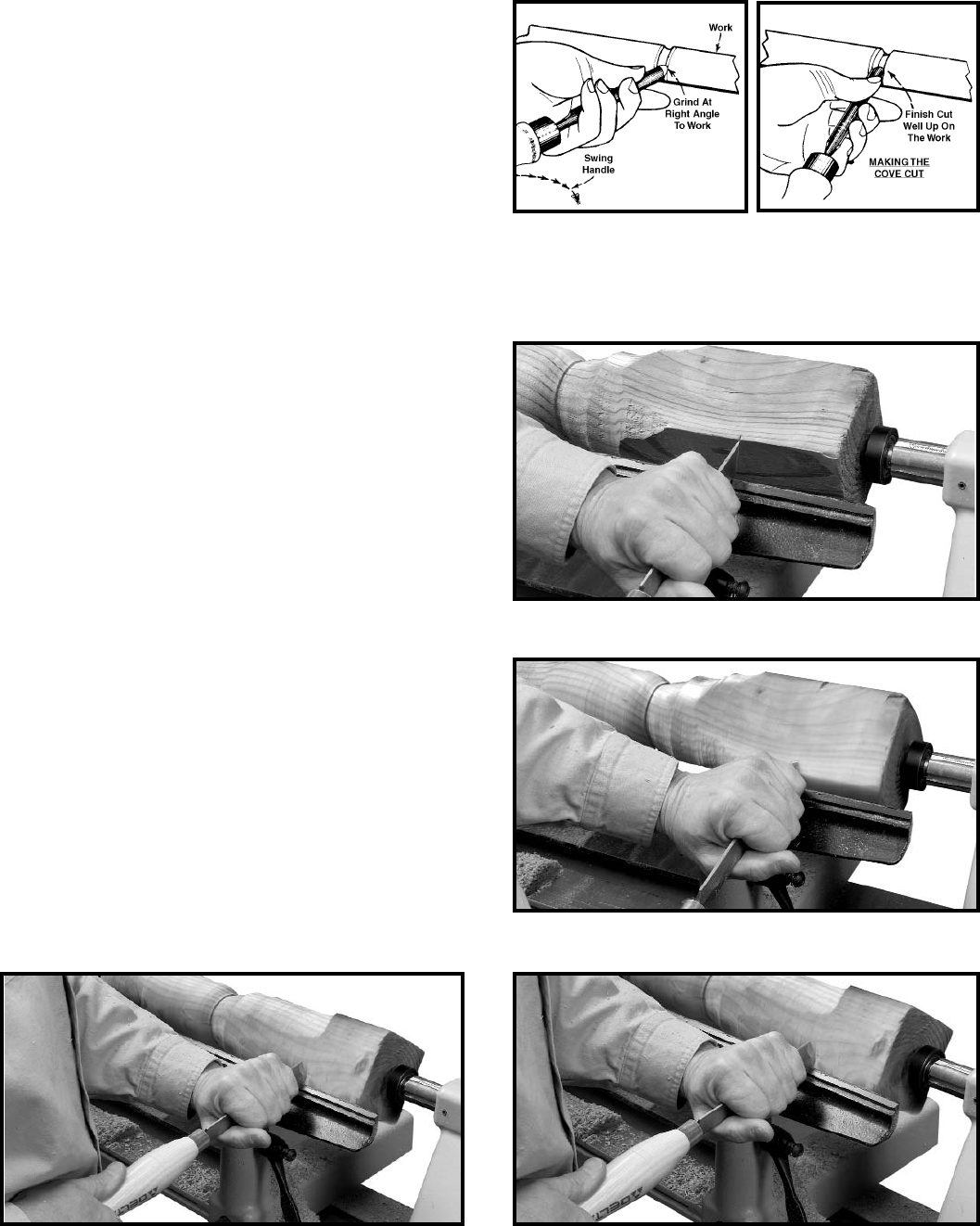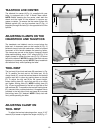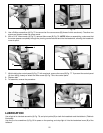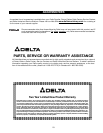
19
The gouge is placed on edge on the tool rest so that the
grind of the chisel forms an approximate right angle
with the work (Figs. 57). The chisel contacts the work at
the center of the cutting edge. Hold the tool so that the
centerline of the gouge is pointing directly toward the
center of the revolving stock. This starting position is
important to prevent the gouge from running along the
surface of the work.
From the starting position, push the gouge into the
revolving stock, and roll the tool on the rest. A triple
action takes place here. (1) The chisel will roll to follow
the shape of the cut, (2) the handle will drop slightly
so that the portion already cut will force the lip of
the chisel sideways and, (3) the chisel will be pushed
forward so that at the end of the cut, Fig. 58, it will be
well up on the work and tangent with the cut surface.
Make only one-half of the cut at a time, then reverse the
chisel to cut the other half. The occasional turner should
make cove cuts with a scraping technique, using either
the small gouge or round nose chisel.
SQUARE SECTIONS
When the turning has a square section, joint the stock
before turning. Good centering is essential since any
error will show at the shoulder where the round meets
the square. Turning of the shoulder from square to
round can be done in various ways. If the parting tool
is sharp, the nicking cut with skew (Fig. 59) can be
omitted. The final trimming operation (Fig. 62) can be
done with either the skew, spear chisel, or gouge, and is
a scraping operation. While the shoulder can be cut with
the same technique used for cutting a bead, the simpler
scraping method pictured does clean work and is easier
to do.
Fig. 61
Fig. 62
Fig. 60
Fig. 59
Fig. 58
Fig. 57


















